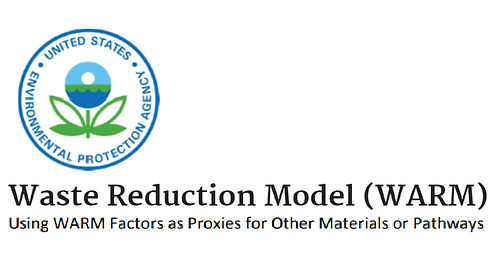
Waste Reduction Model [WARM]

Fuente de la herramienta:
U.S. Environmental Protection Agency (EPA)

EPA created the Waste Reduction Model (WARM) to help solid waste planners track and report greenhouse gas (GHG) emissions reductions from several different waste management practices.
WARM is available both as a Web-based calculator and as a Microsoft Excel spreadsheet (.zip) (586 Kb). The Excel-based version of WARM offers more functionality than the Web-based calculator.
WARM calculates and totals GHG emissions of baseline and alternative waste management practices—source reduction, recycling, combustion, composting, and landfilling. The model calculates emissions in metric tons of carbon equivalent (MTCE), metric tons of carbon dioxide equivalent (MTCO2E), and energy units (million BTU) across a wide range of material types commonly found in municipal solid waste (MSW).
For information on the data and methodologies behind the calculations, please see the model documentation. WARM is periodically updated as new information becomes available and new material types are added.
Users may refer to the model history to better understand the differences among various versions of WARM. WARM was last updated June, 2014.
WARM now recognizes 50 material types, which are presented in the table below; their emission factors are available for viewing in units of metric tons of carbon dioxide equivalent (MTCO2E) or metric tons of carbon equivalent (MTCE). Note that the emission factors represent the GHG emissions associated with managing 1 short ton of MSW in the manner indicated. GHG savings should be calculated by comparing the emissions associated with the alternative scenario with the emissions associated with the baseline scenario, as opposed to simply multiplying the quantity by an emission factor.
For instance, the GHG savings of recycling 1 short ton of aluminum cans instead of landfilling them would be calculated as follows: (1 short ton × -9.11 MTCO2E/short ton) - (1 short ton × 0.04 MTCO2E/short ton) = -9.15 MTCO2E For information on the definition of each of the WARM material types as well as data source and year of underlying life-cycle data, please see the WARM materials definitions list.